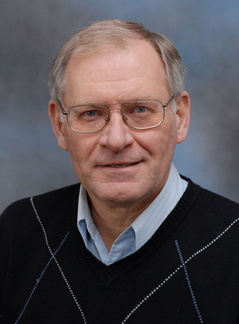
Rodney Johnson, PhD, MS
Titles
Education
PhD of Medicinal Chemistry, University of Kansas
Master of Medicinal Chemistry, University of Kansas
Bachelor of Pharmacy, University of Minnesota
Biography
Bio
Professor Rodney Johnson received a B.S. degree with high distinction in pharmacy in 1972 from the University of Minnesota and a PhD degree in medicinal chemistry in 1976 from the University of Kansas. He was the first graduate student from the University of Kansas selected to participate in the Intersearch Program between the University of Kansas College of Pharmacy and the Victorian College of Pharmacy in Melbourne, Australia.
After receiving his PhD degree, Dr. Johnson was appointed as an instructor of pharmacology at the University of Kansas Medical Center. He was promoted to assistant professor of pharmacology in 1978. In 1979, he accepted a position as an assistant professor of medicinal chemistry at the University of Minnesota. Since 1989, he has held the rank of professor of medicinal chemistry at the University of Minnesota. He was named a Distinguished Professor under the Pharmacy Scholars program in 2010. He was selected as a Fellow of the American Association for the Advancement of Science in 1985.
Awards & Recognition
- Fellow of the American Association for the Advancement of Science
- Distinguished Professor, College of Pharmacy Scholars Program
Professional Associations
- Associate Head, Department of Medicinal Chemistry, University of Minnesota, 2007–2019
- Interim Head, Department of Medicinal Chemistry, University of Minnesota, 1994–1996 and 2005–2006
- Director of Graduate Studies in Medicinal Chemistry, University of Minnesota, 1986–1988 and 1997–2002
- Graduate School Executive Committee, 2000–2002
- Biological Sciences Policy and Review Council, 1997–2002; Chair, 2000–2002
- Senior Editor, Journal of Medicinal Chemistry, 1985–1988
- Associate Editor, Journal of Medicinal Chemistry, 1983–1984
Research Summary
Research in my laboratory focuses on the design and synthesis of peptidomimetics of peptide secondary structures and conformationally-constrained amino acid analogues in order to generate novel ligands that can be used to investigate the pharmacology of dopamine receptors and metabotropic glutamic acid receptors within the central nervous system. The peptide prolyl-leucyl-glycinamide (PLG) has been of particular interest. This unique endogenous peptide allosterically modulates specific dopamine receptor subtypes of the D2 receptor family within the CNS.
The long-term goal of our research is to understand the structural basis and the molecular mechanism by which PLG and its peptidomimetic analogues allosterically modulate dopamine receptors and to use this knowledge to develop novel drugs that potentially can be used to treat Parkinson’s disease, tardive dyskinesia and schizophrenia. In pursuit of this objective, conformationally-constrained peptidomimetics of PLG have been synthesized to elucidate the bioactive conformation of this peptide and photoaffinity ligands were used to definitively determine that PLG was modulating the D2L receptor via an allosteric mechanism.
The location of the PLG allosteric binding site on the dopamine D2L receptor will be determined and the structural nature of this allosteric binding site delineated through the use of a family of bifunctional biotinylated photoaffinity labeling agents with affinity for the allosteric PLG modulatory site. Also, the structural features behind the novel negative modulatory activity of a spiro bicyclic PLG peptidomimetic is being determined.
Finally, the effects of PLG peptidomimetics on the reversal and prevention of behavioral abnormalities in preclinical animal models of schizophrenia is being investigated as part of our long-term goal to explore the potential of PLG and its peptidomimetics in treating diseases in which dopamine receptors are known to play a role.
The research being conducted on the allosteric interaction between PLG peptidomimetics and dopamine receptors will provide further molecular insights into G-protein receptor mechanisms and the possible ways in which this very important superfamily of receptors can be regulated.